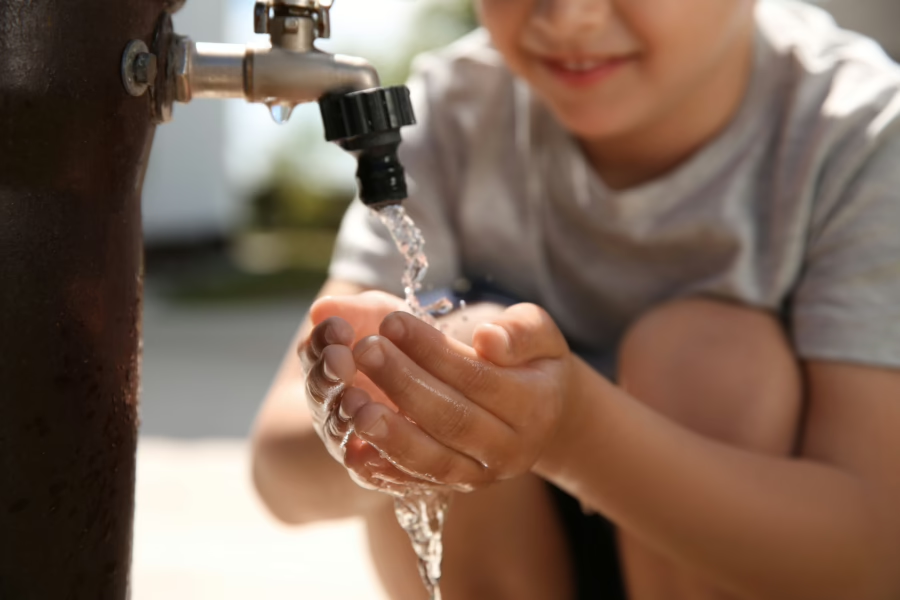Infrastructure remains front and center in the national dialogue as the group of senators working on the bipartisan infrastructure framework have spent much of this month on negotiations. The bipartisan group reached an agreement on $550 billion in new spending, and the Senate voted to begin the multi-step process of debating the bill. Senate voted 67-32, with 17 Republicans joining all 50 Democrats voting in favor of moving forward. Final text of the bill has not yet been released, but $55 billion of the bill’s spending will be directed to water infrastructure. While this signals a historic investment in water, it is less than half of what is called for in President Biden’s American Jobs Plan.
The American Jobs Plan, which President Biden released at the end of March, calls for $45 billion for lead service line replacement, $56 billion for upgrading aging water infrastructure, and $10 billion for monitoring and remediation of PFAS in drinking water—a total of $111 billion for water. The bipartisan infrastructure framework is a strong first step towards achieving the President’s infrastructure goals, but to support the transformational change touted in the American Jobs Plan, additional funding is needed.
As it stands, the bipartisan infrastructure framework includes the Drinking Water and Wastewater Infrastructure Act (S. 914), which passed the senate with strong bipartisan support back in April. S. 914 authorizes $35 billion in water infrastructure programs, including reauthorization of the Clean Water and Drinking Water State Revolving Funds and the Water Infrastructure Finance and Innovation Act (WIFIA) loan program. In collaboration with our network, the Alliance played a key role in shaping S. 914. The Alliance continues to support the bill as strong starting point, but much more is needed to close the water infrastructure gap.
Even with the additional $20 billion for water in the bipartisan infrastructure framework added to the $35 billion from S. 914, there is still a significant need for greater funding. According to research from the Alliance and the American Society of Civil Engineers, the US needs to invest $109 billion per year in water infrastructure over the next 20 years to close the water infrastructure gap. The COVID-19 pandemic has shown how critical the need for this funding is—without safe and reliable water infrastructure, public health is at risk. As the nation looks to recover stronger from the pandemic, the bipartisan infrastructure framework should not be seen as a conclusion to this work, but rather as an important step on a path towards larger goals.
Looking to the companion bill to the bipartisan infrastructure framework, the budget resolution being crafted by Senate Democrats is unlikely to have any water infrastructure provisions. Instead, the $3.5 trillion budget plan will be targeting “human infrastructure,” including priorities like expanding Medicare and funding climate change initiatives. The goal is for this plan to pass via reconciliation, a complicated process that only requires a simple majority vote.
On the House side, the House Committee on Appropriations passed the Fiscal Year 2022 Interior, Environment, and Related Agencies Appropriations bill along party lines. The bill funds the Environmental Protection Agency (EPA) and provides a total of $11.34 billion for the agency, which is an increase of $2.11 billion above the FY 2021 level. Included in the allocation is $3.23 billion for Clean Water and Drinking Water State Revolving Funds, $326.6 million for grants addressing drinking water contaminants and wastewater treatment, and $100 million for six new environmental justice grant programs. These are helpful increases, but it is looking more and more likely that with the Senate behind on its appropriations work and federal funding expiring September 30, we are looking at a continuing resolution to give Congress more time to sort out government funding.
The EPA announced it is considering establishing drinking water limits for all PFAS. Currently, there are no federal limit on PFAS in drinking water, and limits at the state level regulate fewer than 10 types of individual PFAS compounds. The EPA also announced $50 million for environmental justice initiatives to “address disproportionate environmental or public health harms and risks in underserved communities.” The $50 million comes from the American Rescue Plan, and $4.7 million of the funds will be dedicated to monitoring drinking water in rural and tribal areas.


